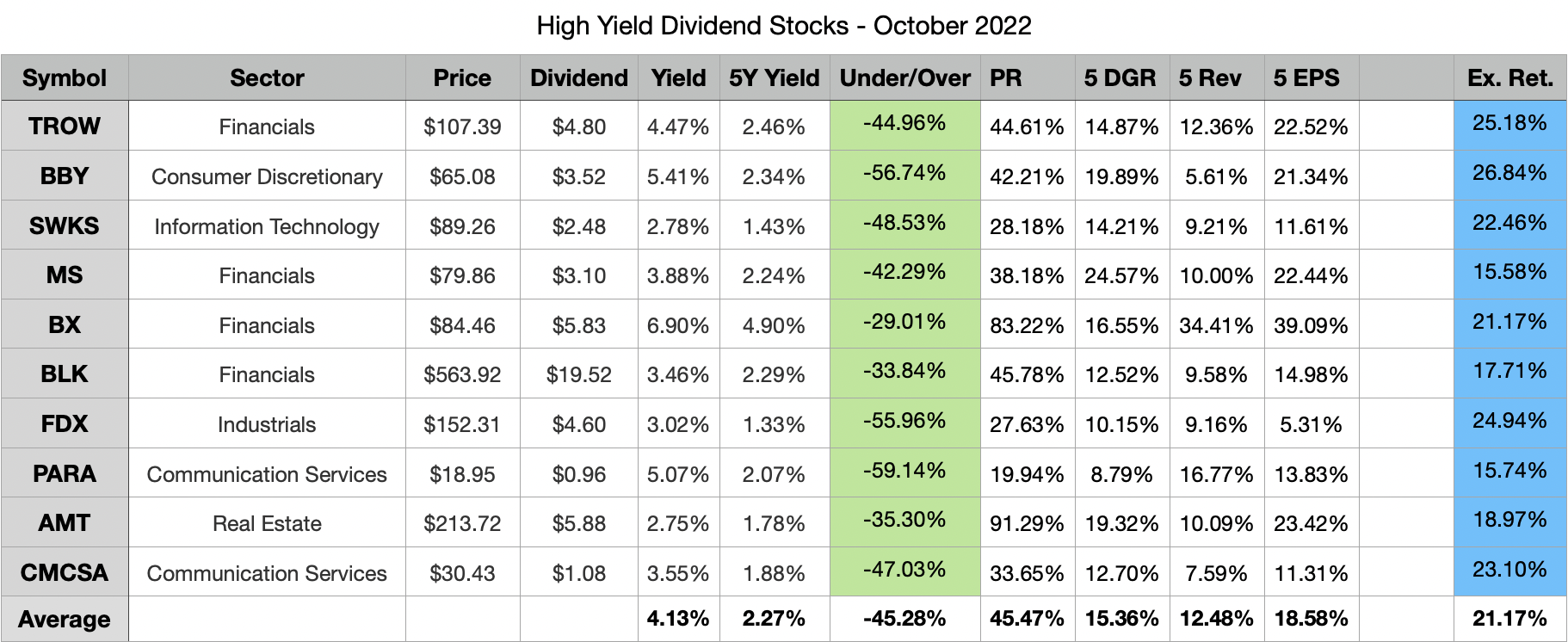
Investors love to invest in dividend stocks. These stocks offer a steady income, but they do come with some risks. The biggest advantage to dividend stocks investing is their higher initial yields than fixed rate accounts. They may also offer stable dividend income in the short term. The company's dividend policy as well as market conditions can affect the dividend yields. It is important that you consider all factors before making a final decision.
Divide the annual dividend by current share price to calculate the dividend yield. For example, if you own a stock with a $50 share price and a $1.00 dividend, your dividend yield would be 2%. Your dividend yield would rise to 1.66% if the share price rose to $60. In addition, your dividend yield will fluctuate with fluctuations in the price of the stock. If the stock's price is likely to rise, you might consider reinvesting your dividends.
Dividend yields can be important as they indicate how much you can expect to earn from an investment in stock. Dividends are paid as a result of the company's financial performance. It may decide to reduce dividends when the company is in financial trouble. Some companies do pay dividends as a way to increase their capital. However, if the company has stable financial performance, it may choose to pay more dividends.

Dividend yields can vary from one country to the next. Countries with early-stage economies can offer higher dividend yields. Look online for dividend stocks offering higher yields. Investing in a country that has an early-stage economy can be risky, so you should consider your investment carefully before making a purchase.
Dividend yields are not necessarily a guarantee of good stocks. High dividend yields can be paid by companies that are undervalued. In the same way, companies can still pay attractive dividends. Companies that are struggling with market conditions may choose to pay low dividends to boost their capital. However, if a company's stock price drops significantly, it may be a sign of trouble.
Consider how long the company has been paying out dividends when comparing dividend yields. Solid companies pay quarterly dividends about the same time every calendar year. Also, mature companies pay higher dividends. Many companies with solid financial records increase their dividends at least once per year. However, not every company does.
It is possible to also evaluate a company’s yield by comparing it with other companies within its industry. For example, many solid companies that sell consumer products or services tend to have higher dividend yields than other companies. Same holds true for businesses that sell staple goods. During a weak economy, these companies may sell their products more widely.

Dividend yields also depend on the size of dividends. Lennar, a stock that makes home-building stocks, has a higher dividend yield than other peers during financial crisis. These stocks might not appeal to all investors.
FAQ
What is a REIT?
A real estate investment Trust (REIT), or real estate trust, is an entity which owns income-producing property such as office buildings, shopping centres, offices buildings, hotels and industrial parks. These are publicly traded companies that pay dividends instead of corporate taxes to shareholders.
They are very similar to corporations, except they own property and not produce goods.
How are shares prices determined?
Investors decide the share price. They are looking to return their investment. They want to make profits from the company. So they purchase shares at a set price. Investors will earn more if the share prices rise. Investors lose money if the share price drops.
An investor's main goal is to make the most money possible. This is why they invest. They can make lots of money.
What is the distinction between marketable and not-marketable securities
The main differences are that non-marketable securities have less liquidity, lower trading volumes, and higher transaction costs. Marketable securities on the other side are traded on exchanges so they have greater liquidity as well as trading volume. Because they trade 24/7, they offer better price discovery and liquidity. This rule is not perfect. There are however many exceptions. For example, some mutual funds are only open to institutional investors and therefore do not trade on public markets.
Non-marketable securities tend to be riskier than marketable ones. They generally have lower yields, and require greater initial capital deposits. Marketable securities are generally safer and easier to deal with than non-marketable ones.
A large corporation may have a better chance of repaying a bond than one issued to a small company. The reason for this is that the former might have a strong balance, while those issued by smaller businesses may not.
Marketable securities are preferred by investment companies because they offer higher portfolio returns.
Statistics
- For instance, an individual or entity that owns 100,000 shares of a company with one million outstanding shares would have a 10% ownership stake. (investopedia.com)
- The S&P 500 has grown about 10.5% per year since its establishment in the 1920s. (investopedia.com)
- "If all of your money's in one stock, you could potentially lose 50% of it overnight," Moore says. (nerdwallet.com)
- US resident who opens a new IBKR Pro individual or joint account receives a 0.25% rate reduction on margin loans. (nerdwallet.com)
External Links
How To
How to make your trading plan
A trading plan helps you manage your money effectively. It will help you determine how much money is available and your goals.
Before you create a trading program, consider your goals. You might want to save money, earn income, or spend less. If you're saving money you might choose to invest in bonds and shares. If you earn interest, you can put it in a savings account or get a house. And if you want to spend less, perhaps you'd like to go on holiday or buy yourself something nice.
Once you know what you want to do with your money, you'll need to work out how much you have to start with. This depends on where your home is and whether you have loans or other debts. You also need to consider how much you earn every month (or week). The amount you take home after tax is called your income.
Next, save enough money for your expenses. These expenses include bills, rent and food as well as travel costs. These all add up to your monthly expense.
Finally, you'll need to figure out how much you have left over at the end of the month. This is your net income.
This information will help you make smarter decisions about how you spend your money.
You can download one from the internet to get started with a basic trading plan. Ask an investor to teach you how to create one.
For example, here's a simple spreadsheet you can open in Microsoft Excel.
This displays all your income and expenditures up to now. This includes your current bank balance, as well an investment portfolio.
And here's another example. A financial planner has designed this one.
This calculator will show you how to determine the risk you are willing to take.
Remember, you can't predict the future. Instead, you should be focusing on how to use your money today.